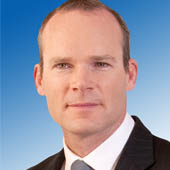11 January 2016
By Bryan Smyth
bryan@TheCork.ie
House price inflation in 2016 will continue to be stronger outside Dublin and prices for the country as a whole are likely to rise by 5% according to the the latest house price survey from MyHome.ie in association with Davy.
The recovery in property prices around the country was reflected in the report’s findings for Cork where the median price for all property types in the county was up 8% year on year at €200K while it was up 7.7% in the city at €210K.
While the median asking price of a 3 bed semi remained stable at €195K in Q4, this is an increase of 13.7% year on year and the highest price for this house type in four years. The median price of a 4 bed semi is now €240K, up 4.3% on the year.
Asking prices on new instructions – which provide the best leading indicator for actual transaction prices – fell by 0.8% nationally in Q4 but were up 7.4% on the year. In Dublin asking prices fell for a second consecutive quarter, by 0.1% and were up 2.6% on the year.
The mix adjusted asking price for new sales nationally is €215,100 while the corresponding figure for Dublin is €312,400. For the entire stock of properties listed for sale on the website the national mix adjusted figure remained unchanged at €205K while in Dublin the figure is €285,900.
The author of the report, Conall MacCoille, Chief Economist at Davy, welcomed the fact that house price inflation had slowed from double digit levels – largely driven by an unsustainable pace of increase in Dublin prices – and that Ireland’s housing market had ‘normalised’ in the final quarter of 2015.
“The Central Bank’s mortgage lending rules appear to have prevented home-buyers from taking out ever-higher leveraged mortgage loans, thus limiting the pace of house price inflation.”
“Housing market activity was artificially inflated towards the end of both 2013 and 2014 by expiring mortgage interest reliefs, capital gains tax exemptions and a rush of transactions and mortgage approvals ahead of the Central Bank’s lending rules. In 2015 the usual summer peak for activity re-asserted itself with the result that both housing transactions and movements in asking prices in Q4 were always likely to be relatively modest.”
Looking to the future MacCoille said he expected the growing divergence between the pace of price rises in Dublin and the rest of the country to continue.
“The median asking price for a three bed semi in Dublin is €275K which is six times the average income of €45,600. In contrast, house price to income multiples in many other areas are still in the range of 3 – 4, so looking forward there is probably more room for prices to catch up outside Dublin”.
“More generally, Ireland’s economic recovery has continued at a rapid pace and we expect to revise up our forecasts for GDP growth in 2016 towards 5%, up from 4% currently. So although affordability is stretched in some areas and households will be constrained from increasing their leverage by the Central Bank rules, rising incomes will help drive house prices upwards.”
“Income growth is now accelerating, driven by public and private sector wage increases, tax cuts and the introduction of a higher minimum wage. The lack of supply in many urban areas also remains acute. So a single-digit gain in Irish house prices, close to 5% seems likely through 2016” MacCoille concluded.
Angela Keegan Managing Director of MyHome.ie said that while the low level of new house building was a concern it was encouraging to see the recovery in property prices spread to many parts of the country.
“The Department of the Environment, Community and Local Government indicated that there were just 10,000 housing completions in the year to October with the final end-2015 figure set to be close to 12,000. This is well short of the 25,000 units per annum which are needed to meet demographic demand. At the moment the level of house building remains close to its weakest level since the 1970’s and this needs to be addressed as a matter of urgency.”
“While it is encouraging to see property prices recovering around the country the low level of transactions and the exceptionally illiquid nature of the market here remains a concern The transactions figure for 2015 – at the time of writing – is over 45,000. This represents just 2.5% of the housing stock of 2m homes and means the average property is being sold just once every 44 years. In the UK the corresponding figure is 23 years, so we need to see the level of transactions increase to around the 80,000 or 4% level” Keegan concluded.



